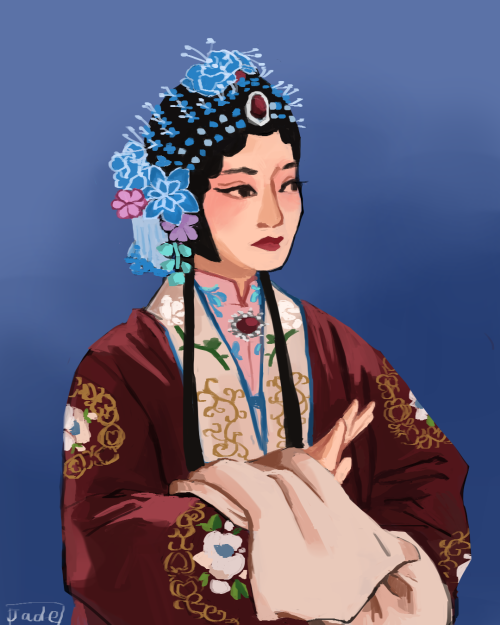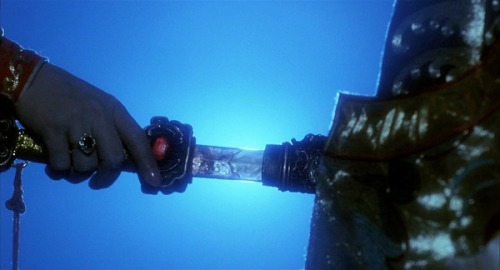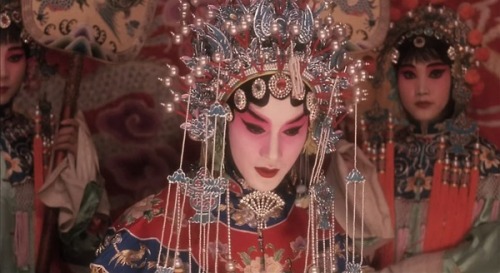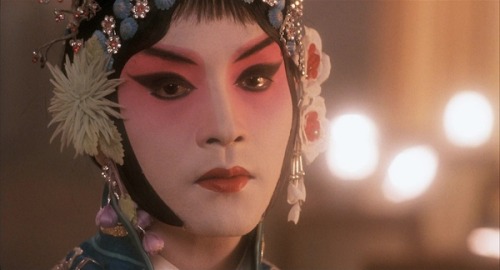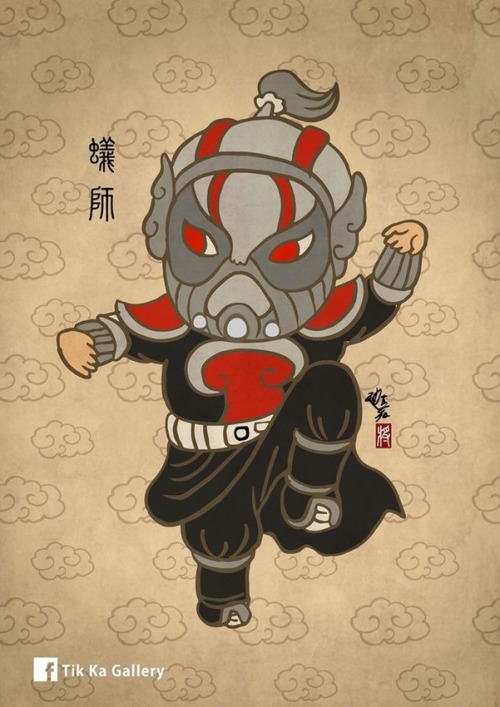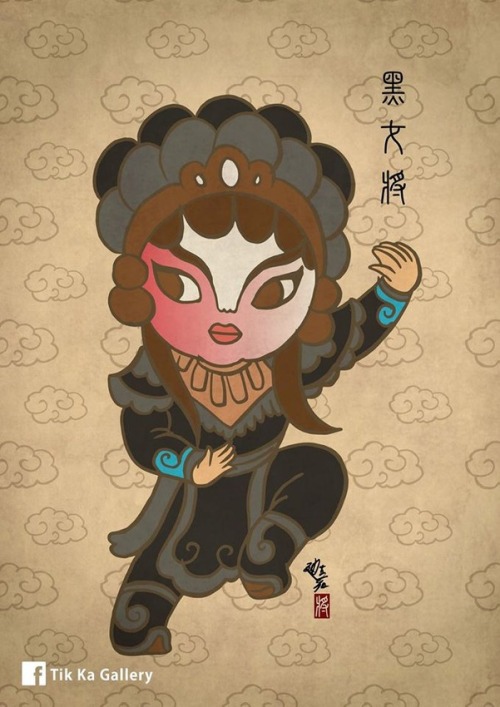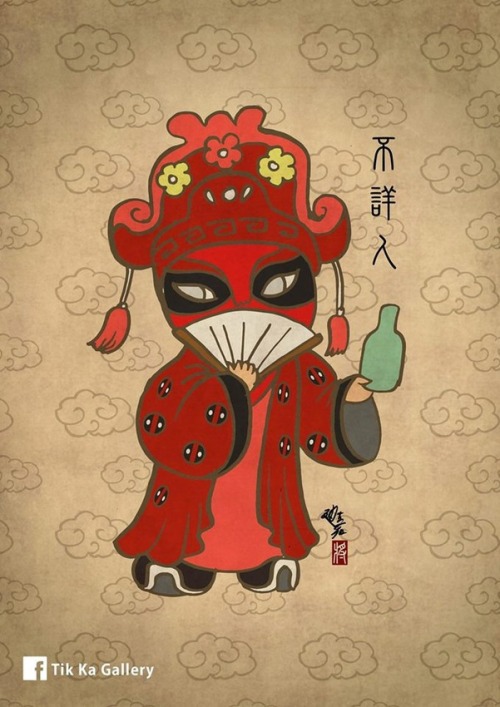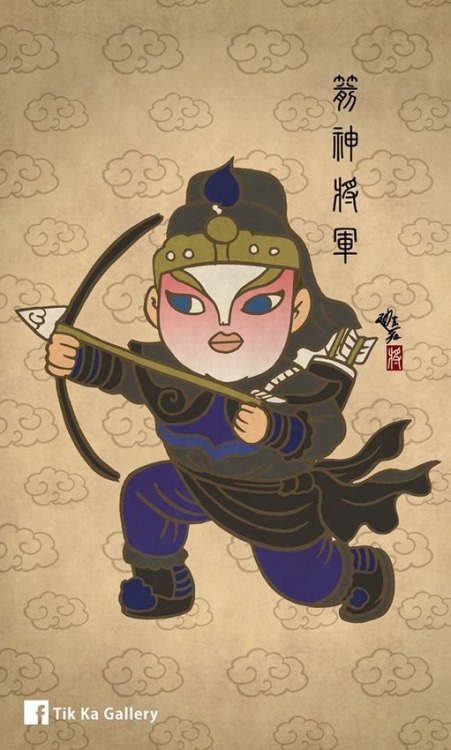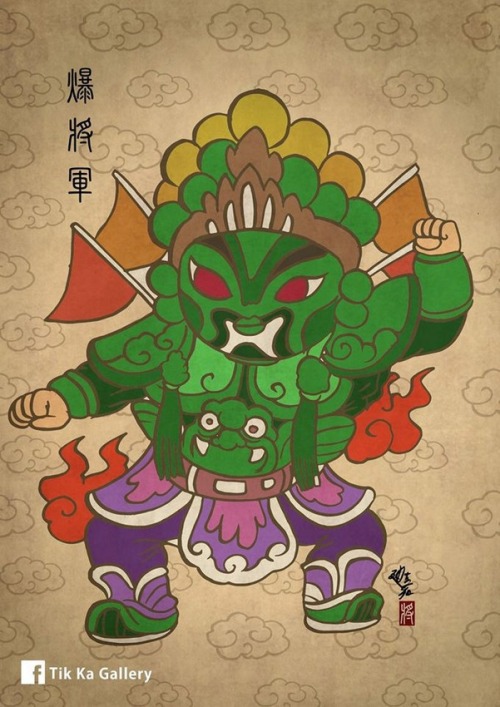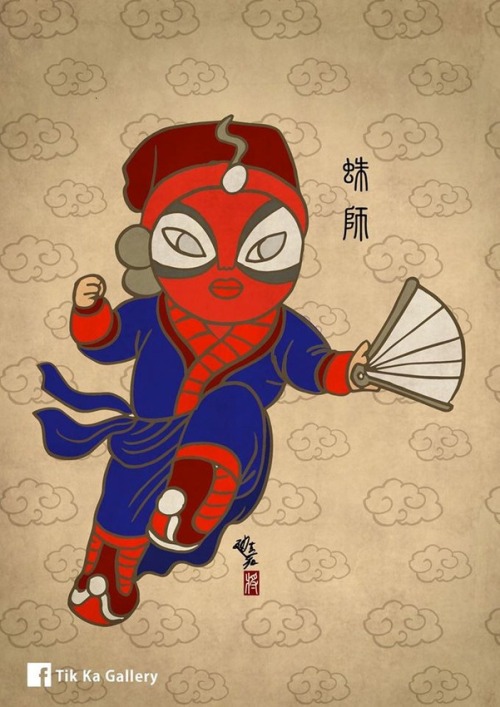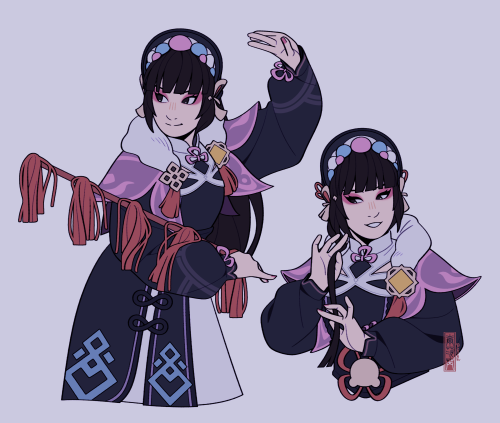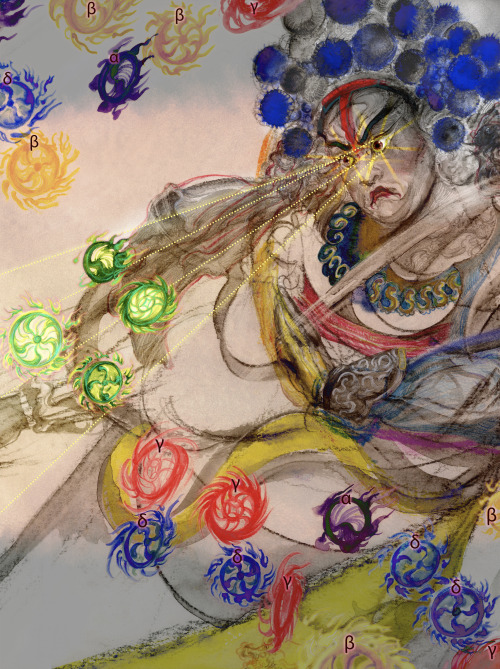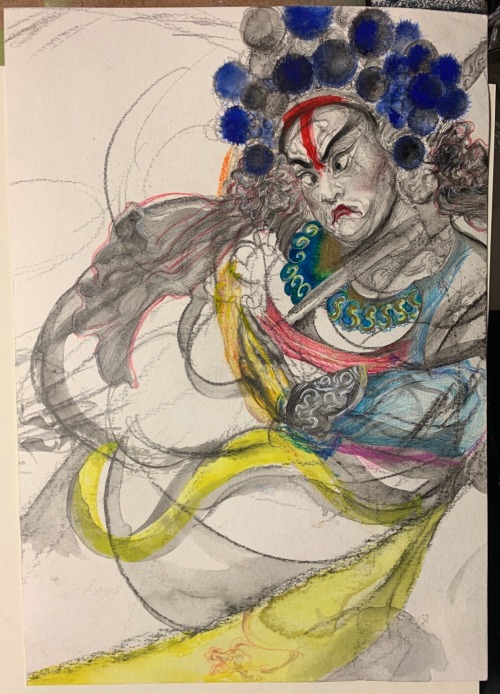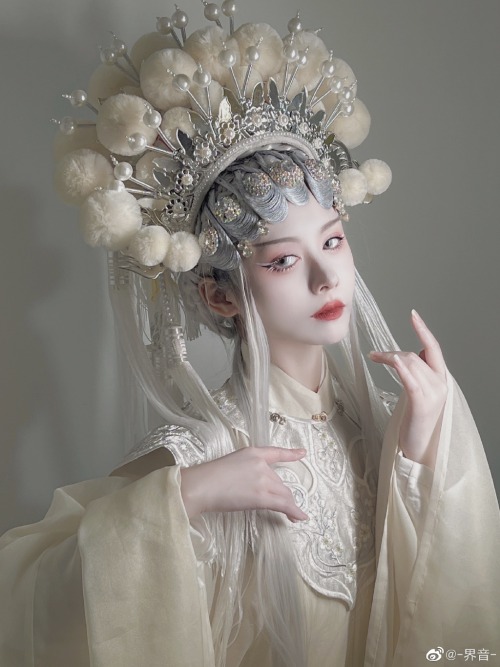#chinese opera
Another practice! Reference of this pic comes from the peking opera Mu Guiying Takes Command/穆桂英挂帅
Post link
霸王别姬 (Farewell My Concubine). Dir. Chen Kaige. 1993.
Chen Kaige’s Farewell My Concubine (1993), adapted from a novel of the same name by Lilian Lee, is a sweeping epic that follows the relationship between two Peking Opera stars, Cheng Dieyi (Leslie Cheung) and Duan Xiaolou (Zhang Fengyi) as they navigate the tumultuous political landscape of 20th century China. Set in Beijing, the film covers a span of 53 years and begins in the 1920s, depicting Dieyi and Xiaolou’s brutal opera training, their eventual rise to fame, and their subsequent struggle to survive and maintain the glory of Peking opera, all against the backdrop of the Japanese invasion,the Chinese Civil War, and the Cultural Revolution.
The name of the film references one of the famous operas that Dieyi and Xiaolou star in, in which Dieyi plays the role of Concubine Yu, who commits suicide out of loyalty to the Chu king, performed by Xiaolou. Dieyi, who is trained as a dan(female) performer, develops an ambiguous gender identity and blurs opera with reality, falling in love with and becoming deeply committed to Xiaolou. Xiaolou does not return his affections and instead marries a prostitute named Juxian, played by the then-rising star actress Gong Li. The film simultaneously depicts the bitter love triangle between Dieyi, Xiaolou, and Juxian, while also weaving personal trauma into a national allegory of the Chinese state.
Farewell My Concubine is considered as a representative work of China’s Fifth Generation film movement. It received international acclaim and won the prestigious Palmes d’Or award at the 1993 Cannes Film Festival.
Post link

Let’s remove the common misperceptions surrounding Beijing Opera as a Chinese art form to better understand its unique and multifaceted storytelling approach.
Here are five common myths eager to be dispelled:
1. Beijing Opera is the oldest form of Chinese Opera
Beijing Opera (京剧, Jīngjù) aka Peking Opera clocks in at a youthful 200 years old and is only one of the 360+ local Chinese operas. By comparison, the influential Kun Opera (昆剧, Kūnjù) musical theater finds its roots in Kunshan, Jiangsu province, and originated more than 600 years ago.
Continue reading
Cover illustration design for a scientific journal in development, the protective umbrella of human body – T lymphocyte cell in personification, dresses like the martial actor of Chinese opera, wearing a T cell-like cap, he uses his fiery keen eyes to distinguish the four variants of the Corona virus: Alpha, Beta, Gamma and Delta. The viruses are all depicted as wind and fire wheels from Chinese martial arts, hinting at their extremely fast escape speed.
Post link
Submit your best shots to our 15th Annual Photo Contest, open now!
Photo of the Day: Chinese Opera
Photographer caption: This shot was taken in the back of a theater in Penang, Malaysia. This person was practicing expression in front of the mirror.
Photo by Zilong Qin (Sugerland, Texas); Penang, Malaysia
Post link
Peony Pavilion.
Hand-pulled screen print on canvas.
This is a scene created according to the Chinese Opera performing style, Peony Pavilion is one of the most classic Chinese operas in the Chinese opera history.
Post link
Types of 旦 (dan; female roles in Chinese opera)
English added by me :)
薛巧萍/Xue Qiaoping, a sixth generation performer, demonstrating the 耍牙/shuaya (“teeth play”) technique from 宁海平调/Ninghai Pingdiao opera.
English added by me :)
In Chinese opera, water sleeves (Chinese: 水袖; pinyin: shuǐxiù) refer to white silk extensions to the cuff of garment sleeves. They are worn by both male and female characters of the higher social class. They are so named because performers can use them to produce movements like the ripples of water.
The handling of water sleeves to express different feelings is a difficult technique which takes years to master.
History
Although long and wide sleeves were used by imperial Chinese politicians for centuries, water sleeves did not appear in Chinese theater until the Ming dynasty (1368–1644). They were extensions of the 1-inch cuff in regular dresses, which protected the sleeves from wear and tear. Originally water sleeves were made of cloth, but these were replaced by silk ones in later years.
Technique
Water sleeves are used to express elegance and emotions, whose techniques will require years of rigorous training to master. The most common basic water sleeves skills (Chinese: 水袖功) include the transition sleeve, the aside sleeve, the hiding sleeve, the angry sleeve, the sending-away sleeve, the female greeting sleeve, the male greeting sleeve, the dusting sleeve, the signifying sleeve, the decision sleeve, the sheltering sleeve, the running sleeve, the weeping sleeve, the friendly sleeve, the beginning sleeve, the alerting sleeve, the masculine sleeve, and the ghost sleeve.
In general, water sleeves can emphasize the movements of the arms and hands, such as pointing to an object. They are also used to cover the face when crying, eating or laughing. When water sleeves are in repose, skillful performers will fold them in accordion pleats on the forearms with a few flicks of the wrists.Variations
Nowadays, the longest water sleeves are found in Jilin opera, and the shortest in Sichuan opera.
The music video for 裙姊 (Skirt Sister) by 李荣浩 (Li Ronghao). The song is a tribute to 梅兰芳 (Mei Lanfang)(1894-1961), who was a famous modern Beijing Opera performer, and is considered one of the “Four Great Dan (旦; female roles in Chinese opera)” (四大名旦) in modern Chinese opera.
Unofficial English lyrics added by me :)
变脸 (Bianlian; “face changing”) in Sichuan opera
An updated compilation of costume transformations from the popular douyin account 朱铁雄.
song:此生过半 (DJ阿卓版)

